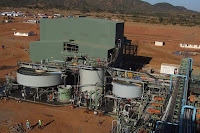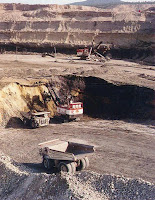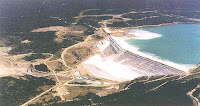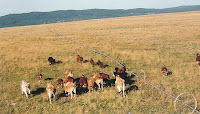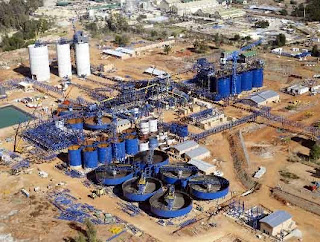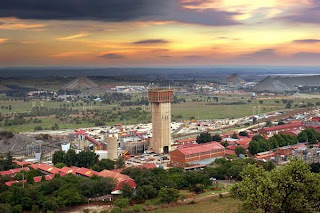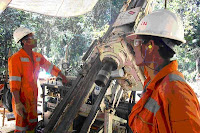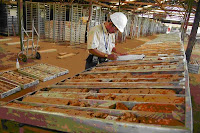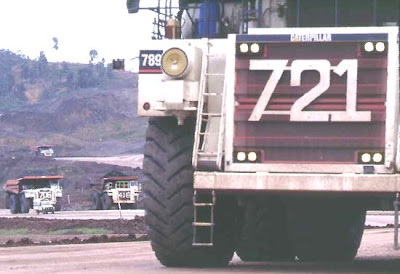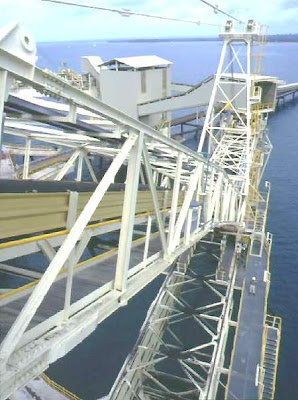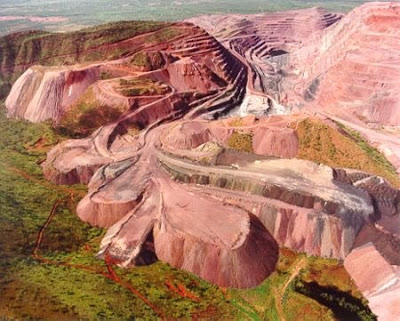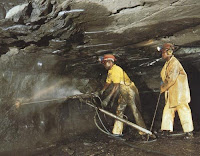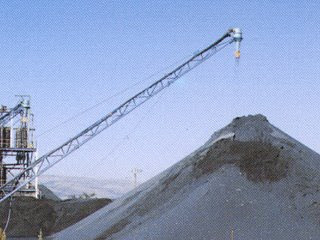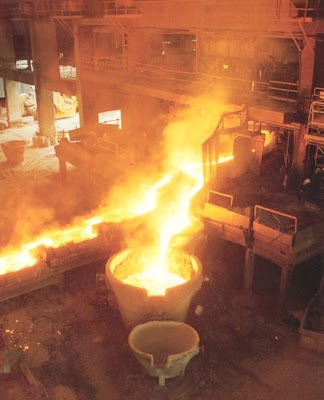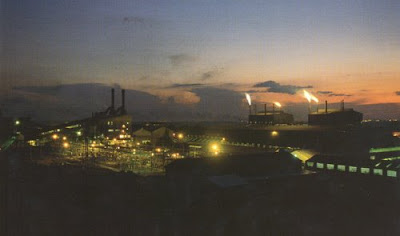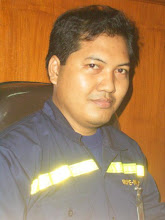 The Olympic Dam copper-uranium mine and plant is situated in South Australia, 580km north-west of Adelaide. Opened in 1988, Olympic Dam is wholly owned and operated by WMC Resources, which discovered the deposit in 1975. A A$1,940m expansion programme was completed in 1999, raising its capacity to 200,000t/y of copper and 4,300t/y of uranium, plus gold and silver. In mid-2005, BHP Billiton gained control of WMC Resources in an A$9.2bn takeover.
The Olympic Dam copper-uranium mine and plant is situated in South Australia, 580km north-west of Adelaide. Opened in 1988, Olympic Dam is wholly owned and operated by WMC Resources, which discovered the deposit in 1975. A A$1,940m expansion programme was completed in 1999, raising its capacity to 200,000t/y of copper and 4,300t/y of uranium, plus gold and silver. In mid-2005, BHP Billiton gained control of WMC Resources in an A$9.2bn takeover.In 2007 BHP Billiton announced that it would undertake a A$6bn–A$7bn expansion of the Olympic Dam mine. The company says that annual ore production will increase up to 70 million tonnes, a seven-fold increase if the expansion proceeds. Copper production will increase from approximately 180, 000t a year to approximately 730,000t.
This would include 500,000oz of gold, 500,000t of copper and 15,000t of yellowcake. Existing average gold production is 80,000oz pa. The additional proven reserves of uranium now make Olympic Dam one of the most promising uranium mines in the world.
Intierra's Minmet data base puts current Olympic Dam proven-probable reserves at 756 million tonnes grading 1.5% copper, 0.5kg/t U308, 0.5 g/t gold and 3.1g/t silver. The measured to inferred resources were 3.214 billion tonnes at 1.025% copper, 0.337kg/t U308, 0.442g/t gold and 2.144g/t silver. On these figures, without improved grades or increased tonnage, Olympic Dam has proven reserves of a contained 12.153Moz gold and contained resources of 45.62Moz.
The results of the study ended much speculation within the mining and investment communities, which were especially abuzz about the potential upgrade of gold reserves.
Once fully complete, the expansion would make Olympic Dam the biggest mine in the world. Concerns have naturally been voiced about how the necessary infrastructure will be funded and deployed. Finding skilled labour will be another challenge.
GEOLOGY AND RESERVES
 The deposit occurs in the basement rocks of the Stuart Shelf geological province in the north of South Australia, west of Lake Torrens. Mineralisation consists of medium-grained chalcopyrite, bornite and chalcocite, fine-grained disseminated pitchblende, gold, silver and rare earth minerals that occur in a magnetic hydrothermal breccia complex beneath 350m of overburden. The ore occurs in distinct zones that determine the mine access and layout.
The deposit occurs in the basement rocks of the Stuart Shelf geological province in the north of South Australia, west of Lake Torrens. Mineralisation consists of medium-grained chalcopyrite, bornite and chalcocite, fine-grained disseminated pitchblende, gold, silver and rare earth minerals that occur in a magnetic hydrothermal breccia complex beneath 350m of overburden. The ore occurs in distinct zones that determine the mine access and layout.As of September 2008, the total ore reserves at Olympic Dam stood at 473Mt, up from 399Mt in 2007, grading 1.86% copper and 0.6kg/t U3O8..
MINING
 The current scope and logistical demands of the mine will be increased by a few orders of magnitude once the expansion gets into full swing. The mine will gradually be transformed from an underground operation to open pit.
The current scope and logistical demands of the mine will be increased by a few orders of magnitude once the expansion gets into full swing. The mine will gradually be transformed from an underground operation to open pit.Three vertical shafts and a decline access the orebody, which is worked using a variation of sublevel open stoping. Each stope may contain 300,000t of ore. Drill drives are driven on the stope centre line and blastholes drilled in vertical rings. These are charged with ANFO and detonated with shock tube detonators. The drilling fleet comprises Atlas Copco and Tamrock production rigs, with development being carried out using two Tamrock (now Sandvik) jumbos. Atlas Copco has supplied two modified Simba H4356S production drilling rigs.
Stopes are backfilled with cemented aggregate of crushed 'mullock' (waste rock), deslimed mill tailings, cement and pulverised fuel ash (PFA). Automation has done much to reduce production costs at Olympic Dam. Innovations include the automated underground haulage system and the 'smart' loader, a robotics-driven, decision-making underground ore carrier.
ORE PROCESSING
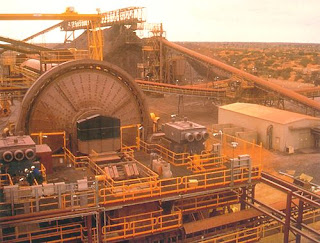 Processing facilities consist of a copper concentrator, hydrometallurgical plant, copper smelter, sulphuric acid plant, copper and gold/silver refineries. Recent expansions included a Svedala autogenous mill, additions to the flotation sections, two counter-current decantation thickeners, an electric slag-cleaning furnace, a new anode furnace gas-cleaning plant and additional electro-refining cells.
Processing facilities consist of a copper concentrator, hydrometallurgical plant, copper smelter, sulphuric acid plant, copper and gold/silver refineries. Recent expansions included a Svedala autogenous mill, additions to the flotation sections, two counter-current decantation thickeners, an electric slag-cleaning furnace, a new anode furnace gas-cleaning plant and additional electro-refining cells.Copper is recovered primarily by copper sulphide flotation from slurry before the copper concentrate is smelted and electro-refined to high-purity copper.
Wastes generated during electro-refining are treated to recover gold and silver. After treatment by flotation, the finely-crushed ore is leached with sulphuric acid to dissolve uranium and any remaining copper. The leach liquor is processed in the solvent extraction plant to separate the residual copper and uranium streams. Copper is recovered by electrowinning and uranium converted to yellowcake and calcined uranium oxide.
Installation of two pulsed columns has increased uranium recovery from solution from 90% to about 97%. These columns use an air pulse to mix the acidic and organic solutions, providing better contact for the chemical reaction involved in transferring the uranium from one to the other.
Copper cathode sheets are transported by truck within Australia and to Port Adelaide for export. All uranium oxide produced at Olympic Dam is exported. The gold plant became fully operational in 2000. A fire in 2002 at the solvent extraction / electrowinning plant cost over A$300m to repair, while WMC also spent A$127m on renovating the copper smelter during 2003.
EXPANSION
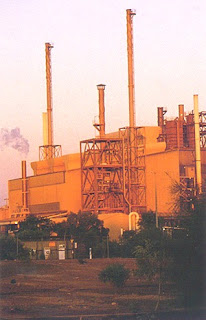 At the end of October 2008, BHP Billiton announced that it expects to complete the first of the mine's five-stage expansion by 2013, boosting annual production capacity to 200,000t of copper, 4,500t of uranium and 120,000oz of gold. Up to the end of the business year on 30 June 2008, Olympic Dam produced 169,000t of copper cathode, 4,144t of uranium and 80,517oz of gold.
At the end of October 2008, BHP Billiton announced that it expects to complete the first of the mine's five-stage expansion by 2013, boosting annual production capacity to 200,000t of copper, 4,500t of uranium and 120,000oz of gold. Up to the end of the business year on 30 June 2008, Olympic Dam produced 169,000t of copper cathode, 4,144t of uranium and 80,517oz of gold.The expansion will be followed by a staged development of an open pit, with an eventual target output of 730,000t of copper and 19,000t of uranium. The company also said it is looking at shipping copper concentrate directly to smelters in China, which will cut the cost of producing cathodes at the mine.
ENVIRONMENT
 Olympic Dam maintains storage facilities for all waste products. The plant has been designed so that any spillage of ore, concentrate or process slurries can readily be returned to the process circuit. The plant also includes comprehensive air pollution control equipment and both air emissions and noise are monitored. Extensive radiation monitoring of personnel and the environment is ongoing.
Olympic Dam maintains storage facilities for all waste products. The plant has been designed so that any spillage of ore, concentrate or process slurries can readily be returned to the process circuit. The plant also includes comprehensive air pollution control equipment and both air emissions and noise are monitored. Extensive radiation monitoring of personnel and the environment is ongoing.The Australian and South Australian Governments jointly determined that the proposed Olympic Dam expansion must be formally assessed through an Environmental Impact Statement (EIS).




